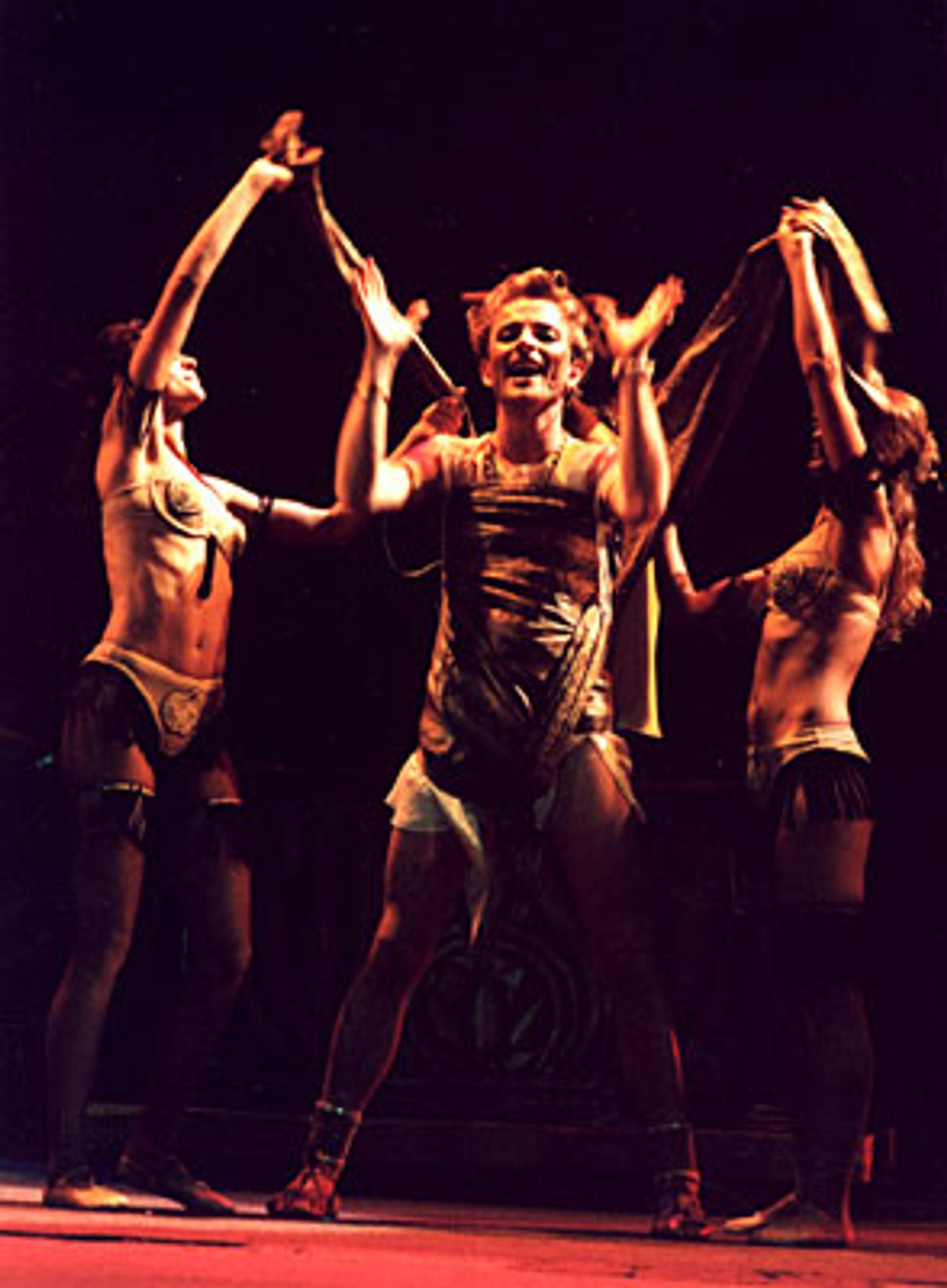Review: JESUS CHRIST SUPERSTAR at Theatre Mossoveta
Jesus Christ Superstar emerged initially as a concept album in 1970, just as the tide of the Aquarian 1960s counterculture had receded. The historical parallels were obvious: the past decade had been full of promised lands and false messiahs; surely, it wasn't too hard to imagine Christ as a resistance figure, his apostles, as a cult, and Rome and Israel as the establishment. The concept album was a hit, the broadway adaptation was a hit, and the film adaptation, a few years later, was a smash hit, cementing the reputations of its creators, who went on to produce hit after hit for almost twenty years.
.jpg?format=auto&width=1400)
From left to right: Valery Anokhin,
Irina Klimova, and Valery Yaremenko
as Jesus, Mary Magdalene, and Judas
In the early days, Christian groups protested the show as being too liberal in its interpretation of their story; in particular, they found Judas too sympathetic, and they objected to Christ's apparent lack of Godliness. Such blasphemies cannot be found inPavel Homsky's staging of Jesus Christ Superstar, which has been running at the Mossoveta Theatre since 2006, and is practically an establishment in and of itself.
In Moscow, Judas is offered no sympathy, nor, indeed, dignity; he is a sniveling coward, clueless, abusive, and useless, except to betray Christ. He is barely strong enough to keep the robe on his shoulders, he rolls around the floor, he foams at the mouth. Mary Magdalene, conversely, is elevated, as if by some offstage miracle, from a tramp in the first act to a wise and sensitive mother figure in the second. Christ wears gleaming white robes, which almost seem to shine in a world made up of stone and leather. In the final scene, the crucifiction, a part of an Orthodox icon is lowered from the rafters; moments later, Christ himself appears fresh as a daisy and decidedly un-crucified, riding a motorcycle with Mary Magdalene's arms around his waist. Although there may be an aesthetic reference to the punk-and-rebel spirit of the 60s and 70s, the thematic emphasis is decidedly old-school.
In a sense, this a step back. Webber and Rice created a Christ for the modern day; they had no interest in condemning sin or performing miracles. Theirs was a story about a man and a movement, about responsibility, passion, and reality. But they chose Christ to tell this story, and, in doing so, joined a cannon that goes back much, much further than 1970. Any reinterpretation is open to being de-interpreted. There is something ridiculous, after all, in criticizing a telling of the story of Christ for being too religious.
And why should we want to? Webber and Rice used religion to celebrate

Andrei Smirnov as King Herod
counterculture; surely Pavel Homsky can use counterculture to celebrate religion. As far as passion plays go, this one may be the most entertaining; it certainly has the best music, the best dancing, and the most partial nudity (yes, really). King Herod's number is a smash, decadent, disgusting, and delightful. Jesus, Judas, and Mary Magdalene each have a brilliant set of pipes. The set is epic and towering.
I've seen Jesus Christ Superstar before, in theatres and on screen, and I've never really connected to the message of Christ as a rebel leader. Nor did I care much for Mossoveta's revival, as it were, of the Christ-as-God message. But it doesn't matter: Jesus Christ Superstar has endured not because of its message, but because of its music and its passion. This Mossoveta has captured perfectly.
Reader Reviews
Videos

